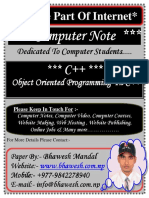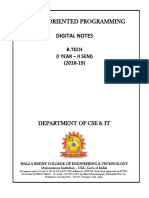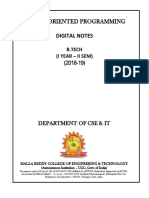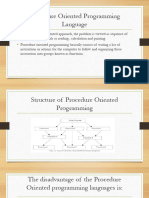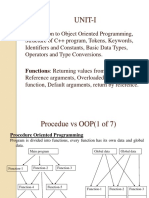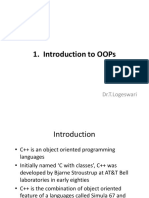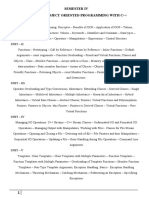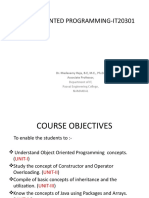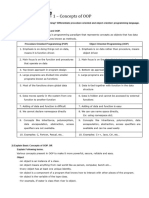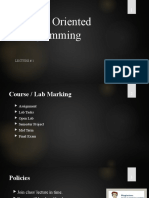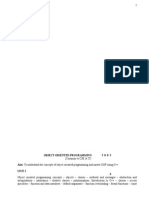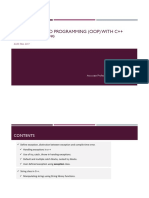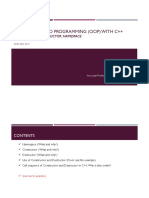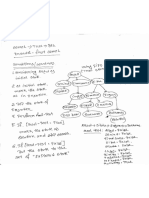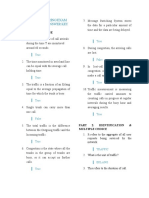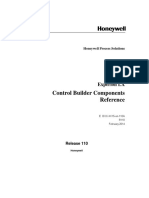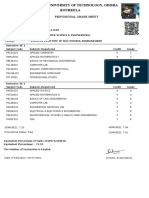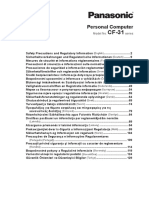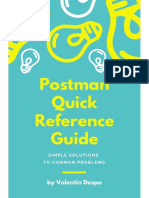0% found this document useful (0 votes)
162 views33 pagesC++ OOP Course Overview
This document provides an introduction to object oriented programming (OOP) with C++. It outlines the course contents including evaluation criteria, introduces the instructor, and discusses key concepts of OOP such as classes, objects, inheritance, polymorphism, and abstraction/encapsulation. Recommended sources for learning more about C++ are also provided.
Uploaded by
ANIK DeyCopyright
© © All Rights Reserved
We take content rights seriously. If you suspect this is your content, claim it here.
Available Formats
Download as PDF, TXT or read online on Scribd
0% found this document useful (0 votes)
162 views33 pagesC++ OOP Course Overview
This document provides an introduction to object oriented programming (OOP) with C++. It outlines the course contents including evaluation criteria, introduces the instructor, and discusses key concepts of OOP such as classes, objects, inheritance, polymorphism, and abstraction/encapsulation. Recommended sources for learning more about C++ are also provided.
Uploaded by
ANIK DeyCopyright
© © All Rights Reserved
We take content rights seriously. If you suspect this is your content, claim it here.
Available Formats
Download as PDF, TXT or read online on Scribd
/ 33
